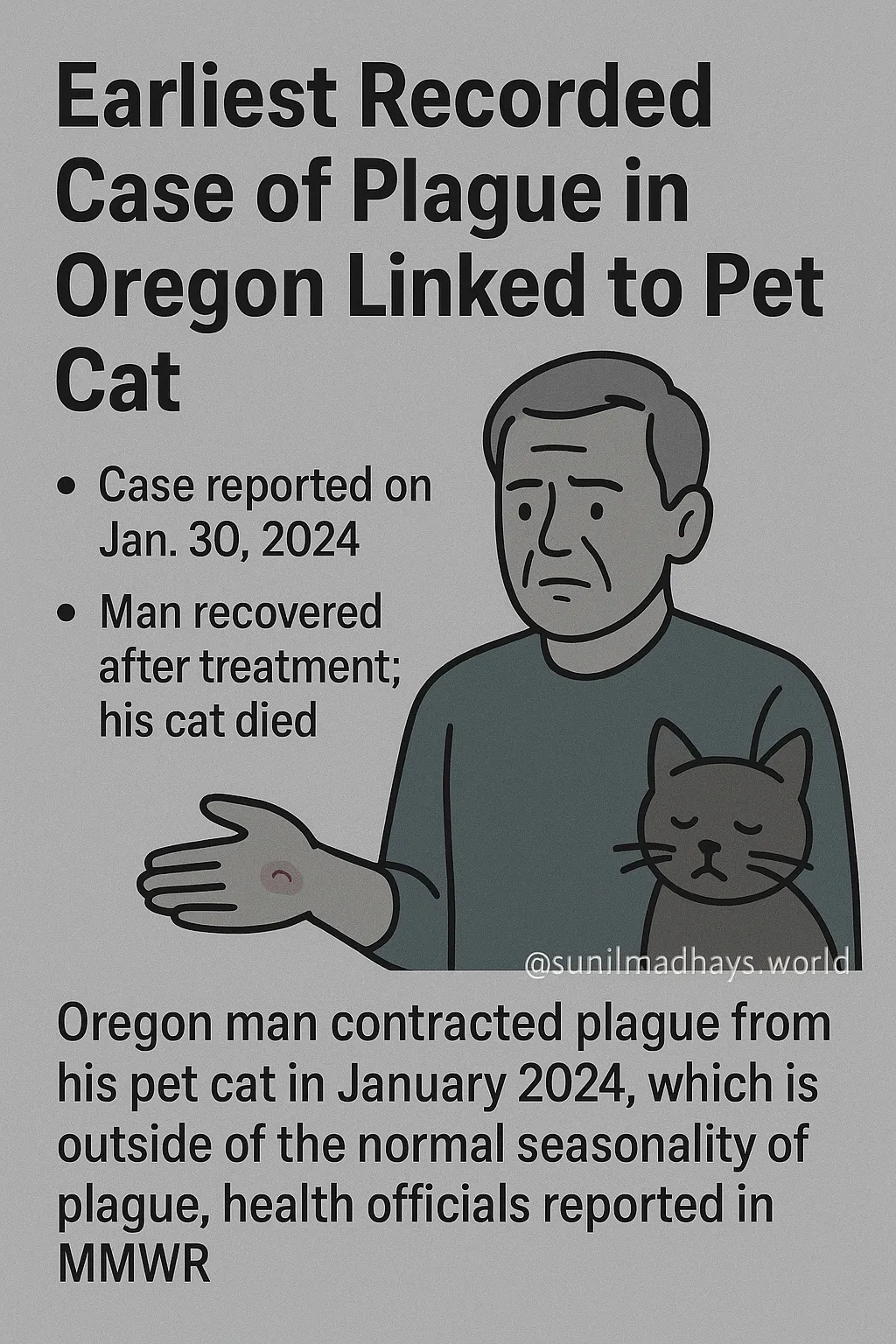Key Takeaways:
- On January 30, 2024, Oregon recorded its earliest-ever case of plague, outside the typical seasonal occurrence.
- The infected individual, a 73-year-old man, recovered after treatment, but his pet cat died.
Case Summary:
In January 2024, an Oregon man contracted the plague from his sick cat, an unusual occurrence outside the usual plague season. Health officials documented the case in the Morbidity and Mortality Weekly Report (MMWR).
Timeline of Events:
- January 19, 2024: The man’s 2-year-old cat was treated for a neck abscess and vomiting with oral antibiotics.
- January 25, 2024: The owner accidentally cut his finger with a kitchen knife, sought urgent care, and later had close contact with his cat at home.
- January 26, 2024: He noticed a new ulcer on his wrist.
- January 30, 2024: He visited the emergency department (ED) due to worsening symptoms, including cellulitis and lymphadenitis spreading from the wrist to his armpit.
- Hospitalization: He was admitted and initially treated with IV ceftriaxone and metronidazole for bacterial lymphangitis.
- February 6, 2024: Blood tests confirmed Yersinia pestis (plague bacterium), prompting a switch to IV gentamicin and levofloxacin.
- Recovery: His condition improved, and he was discharged with a 9-day oral levofloxacin course, fully recovering by February 15. Unfortunately, his cat died after not receiving its prescribed antibiotics post-surgery.
Transmission and Unusual Timing:
Dr. Emilio DeBess, Oregon’s public health veterinarian, explained that the man likely contracted the plague from his cat. Cats are highly susceptible to plague and can transmit it to humans, especially through flea bites. This case was notable not only for its zoonotic transmission but also for occurring in January—far earlier than the typical plague season in the western U.S. (usually warmer months). This suggests possible shifts in flea or rodent behavior, climate influences, or indoor exposures.

Public Health Implications:
- Plague cases in the U.S. are rare (averaging seven per year since 2000), but early diagnosis and treatment are critical.
- The atypical timing highlights the need for year-round vigilance in endemic regions, not just during traditional “plague season.”
Recent Research on Treatment:
A New England Journal of Medicine study compared oral ciprofloxacin monotherapy with a combination of injectable aminoglycoside followed by oral ciprofloxacin in 450 suspected bubonic plague patients (2020–2024). Results showed oral ciprofloxacin alone was just as effective, with treatment failure rates of 9% (monotherapy) vs. 8.1% (combination therapy). This supports using simpler, cheaper oral treatments in resource-limited areas.
Expert Commentary:
Dr. Paul Mead of the CDC emphasized that oral antibiotics like ciprofloxacin can effectively treat plague, making treatment more accessible in rural regions. However, patient monitoring may be needed to ensure compliance.
References:
For further details, contact Dr. Emilio DeBess at emilio.e.debess@oha.oregon.gov.

